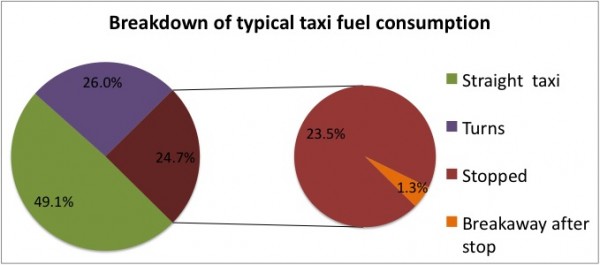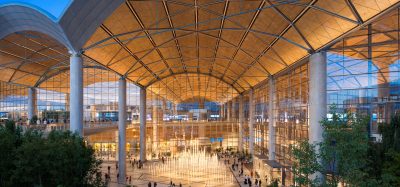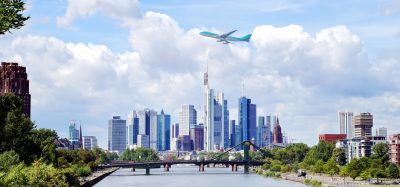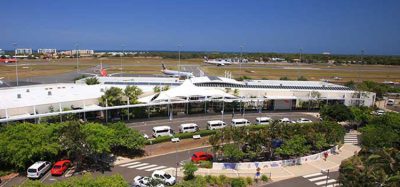Dealing with the airport and its environment
Posted: 1 October 2010 | Hamsa Balakrishnan, John-Paul Clarke, Eric Feron, and Marc Pélegrin | No comments yet
Airport infrastructure capacity is rapidly being approached in many cities around the world. Environmental factors, such as acoustic and chemical emissions, are increasingly less tolerated by neighbouring communities. The net result is that new means must be found that deliver more aircraft to the airspace with less environmental impact on the community, while maintaining the current level of safety enjoyed by air transportation. In this article, we investigate a few promising options to decrease the environmental footprint of airports.
Airport infrastructure capacity is rapidly being approached in many cities around the world. Environmental factors, such as acoustic and chemical emissions, are increasingly less tolerated by neighbouring communities. The net result is that new means must be found that deliver more aircraft to the airspace with less environmental impact on the community, while maintaining the current level of safety enjoyed by air transportation. In this article, we investigate a few promising options to decrease the environmental footprint of airports.
Pour more concrete
Urban living is progressing rapidly. 70% of the human population is predicted to live in cities of more than 50,000 inhabitants by 2050. This population growth will result in the further acceleration of air transportation needs, and in prohibitive operation and environmental costs for small airports located close to downtown. A solution is to build new airports further away from the city. An environmentally acceptable distance is 30 – 50 kilometres from downtown, with a fast ground transportation system such as an automated commuter rail to link the airport to downtown. Such rapid expansion is characteristic of fast-developing economies like China.
According to Boeing’s current market outlook, China will build more than 100 new airports through 2020. India will build in excess of 35 new airports. Developed economies face considerable financial and political adversity against building new airports, which forces airport authorities to leverage existing resources as well as possible. One possible way to improve airport capacity and reduce congestion is by adding or modifying runways, but airport expansion projects can take decades and face significant challenges from the local population, as was seen in the case of Boston Logan International (BOS) airport’s runway 14/32. Runway construction efforts can also significantly disrupt operations, as recently witnessed at New York’s Kennedy (JFK) Airport.
Improve surface traffic coordination
Departing aircraft push back from their gates, traverse through the ramp area and then the taxiway system, and reach the departure queue, which is formed at the threshold of the departure runway(s). Similarly, arrivals leave the runway via exit ramps, taxi through the taxiways and then the ramp area, and finally push in to their respective gates. Each of these phases of the taxi-out process, namely, the ramp area, the taxiway system, and the runway system, present opportunities for optimising operational efficiency.
The majority of aircraft (especially departures) currently taxi on all engines and contribute to surface congestion, noise, and chemical emissions. For example, a short-haul jet aircraft burns approximately 350 Kg of fuel during taxi-out or taxi-in. Thus it is desirable that the taxi phase of flights be minimised through coordinated surface movements. A simple and near-term approach to such coordination is to limit the rate at which aircraft push back from their gates when the airport surface is already congested, i.e., the airport has reached its maximum departure throughput, and any further pushbacks will only increase surface congestion. Our analysis has shown that this simple strategy has the potential to lead to a 20% decrease of the taxi-out times of flights operating during such congested periods.
An experimental implementation of the concept is scheduled to be tested by the Massachusetts Institute of Technology for the FAA Center of Excellence’s Partnership for AiR Transportation Noise and Emissions Reduction (http://www.partner.aero) consortium at BOS. However, such a strategy is designed only for airports that suffer from frequent congestion, such as BOS, JFK or New York La Guardia (LGA) airport. JFK was congested 18% of the time in 2007, and 31% of all departures occurred during periods of high congestion. The latter figure exceeds 50% of all departures at LGA. At uncongested airports, this form of aggregate control, which is not unlike an internet congestion control protocol, does not produce significant results. Highfidelity control, where the trajectories of all airport vehicles are tightly coordinated, can yield 20-25% reductions of taxi times. However, such coordination requires significant procedural changes and investments.
These investments are already under way, such as the ASDE-X high-accuracy surface surveillance system, which could eventually be used to provide detailed situational awareness to all airport operators and computerised surface optimisation tools. It is also difficult to imagine high-fidelity airport trajectory planning without high-precision, failure-tolerant guidance of all vehicles. Current mobility mechanisms of aircraft (jet engines) and other ground vehicles (Internal combustion engines) makes them illsuited for this task, and may be advantageously replaced by electric propulsion systems, discussed thereafter.


Typical taxi fuel consumption breakdown at a major airport – little aditional consumption arises from breakaway after stop, suggesting the pilots ‘ride the brakes.’
Runway capacity has traditionally been recognised as the limiting factor to airport capacity, due to various operational constraints, such as wake-vortex separation requirements. Consequently, even small enhancements to runway throughput, for example, via sequencing of arrivals or departures, can make a significant impact on system-wide delays. We have shown that the benefits of sequencing departures (relative to first-come, first-served) increase as the demand increases. And for an achievable runway capacity enhancement of 6% via sequencing, a 25% reduction of taxi delay follows.
Reliable models that can translate taxi trajectories into aircraft fuel burn and airport surface emissions are essential for the development of high-fidelity emission mitigation strategies. Such models need to account for variability factors like pilot taxiing habits. For example, pilots may ride their brakes while taxiing rather than change the aircraft thrust. This is supported by the observation that fuel burn is often unaffected by a stop.
Go electric
Much of the power required for airport operations comes from the aircraft engines themselves, which makes them major sources of noise and chemical emissions. At the gate (or on the tarmac), airports are often unable to deliver ground power to aircraft, which must use their auxiliary power units (APUs). During taxi, jet engines must provide the propulsive power needed to move the aircraft. Emissionfree devices relying on electrical sources offer an attractive alternative. Electric taxi operations rely on electrical motors installed in the nose wheel or, preferably, the main landing gear, according to different systems under study by Airbus, Boeing, Safran, and Wheeltug, among others. The necessary electricity could then come from either the APUs or, possibly, fuel cell alternatives to APUs currently under evaluation. In the latter case, the aircraft’s contribution to airport noise and pollutant emissions during taxi and at gate would be completely annihilated. It would follow Virgin Atlantic’s use of fuel cell powered automobiles for select ground transportation needs.
Up in the air: Noise abatement and continuous descent approaches
The impact of airborne aircraft noise and emission on communities is an important consideration in both the location and the operation of airports. To mitigate these impacts, certain airports with particularly close or sensitive communities have developed noise abatement (low noise) and low emissions procedures. These procedures are modified versions of existing instrument flight procedures, but are often too complex to be performed under instrument flight rules (IFR), when the weather is bad and pilots must rely solely on the instruments in the aircraft for guidance. The additional guidance required to perform these noise abatement procedures is provided by the visual ground references available under visual meteorological conditions.
Advanced flight guidance technologies such as area navigation, utilising the global positioning system, offer the potential to reduce the impact of aircraft noise on communities surrounding airports. They enable more flexible approach and departure procedures that reduce noise exposure to the most sensitive areas. Aircraft with Area Navigation capability are able to navigate through the air on preplanned trajectories that do not cause them to exceed their performance and safety limits. These trajectories are defined by a series of waypoints that are not necessarily designated by conventional radio navigation aids. Corresponding altitude and speed constraints may also be given at waypoints. The waypoints define the desired lateral path, whereas the altitude and speed constraints jointly define the desired vertical path and speed profile.
The PARTNER consortium’s research has shown, in both simulations and flight trials, that idle (or near idle) approaches provide significant noise, emissions, fuel burn and flight time reductions in comparison to existing instrument landing system approaches, and are preferred by pilots to the more complex vertically segmented approach in use today. In a numerical study of potential low-noise approaches to runway 13L at Kennedy Airport, use of an idle approach resulted in a 50% reduction in the population impacted by noise greater than 60 dBA. Results of flight trials of a continuous descent approach procedure at Louisville International Airport indicate that introduction of such a procedure would result in a reduction in the A-weighted peak noise level at seven locations along the flight path by 3.9 to 6.5 dBA, and reductions in the fuel consumed during approach by 400 to 500 lb (181 to 227 kg).
The noise reduction is significant given that a 3-dB difference represents a 50% reduction in acoustic energy and is noticeable to the human ear, and the 7% reduction in the size of the 50 day night average noise level (DNL) contour that would result if all aircraft were to perform the procedure. The fuel saving is also significant, given the financial benefit to airlines and the accompanying reduction in gaseous and particulate emissions.
Continuous descent approaches have been implemented at a few key locations. They are now part of routine operations at Los Angeles International (LAX) airport since 2007. They are implemented experimentally at Miami (MIA) airport, as part of the US-EU Atlantic Interoperability Initiative to Reduce Emissions (AIRE), with encouraging results.
About the Author
Hamsa Balakrishnan
Hamsa Balakrishnan is an assistant professor of aeronautics and astronautics in the Massachusetts Institute of Technology Aeronautics and Astronautics Department.
John-Paul Clarke
John-Paul Clarke directs the Air Transportation Laboratory at the Georgia Institute of Technology where he is an associate professor of aerospace engineering.
Eric Feron
Eric Feron is the Dutton-Ducoffe Professor of aerospace engineering at the Georgia Institute of Technology.
Mark Pélegrin
Mark Pélegrin is a professor emeritus at the Institut Supérieur de l’Aéronautique et de l’Espace, a foreign associate of the National Academy of Engineering, and an honorary adviser to the Office National d’Etudes Aérospatiales.
Stay Connected with International Airport Review — Subscribe for Free!
Get exclusive access to the latest airport and aviation industry insights from International Airport Review — tailored to your interests.
✅ Expert-Led Webinars – Gain insights from global aviation leaders
✅ Weekly News & Reports – Airport innovation, thought leadership, and industry trends
✅ Exclusive Industry Insights – Discover cutting-edge technologies shaping the future of air travel
✅ International Airport Summit – Join our flagship event to network with industry leaders and explore the latest advancements
Choose the updates that matter most to you.
Sign up now to stay informed, inspired, and connected — all for free!
Thank you for being part of our aviation community. Let’s keep shaping the future of airports together!
Issue
Related topics
Related organisations
Georgia Institute of Technology, Massachusetts Institute of Technology

















